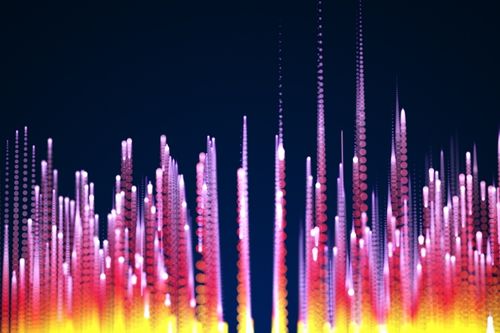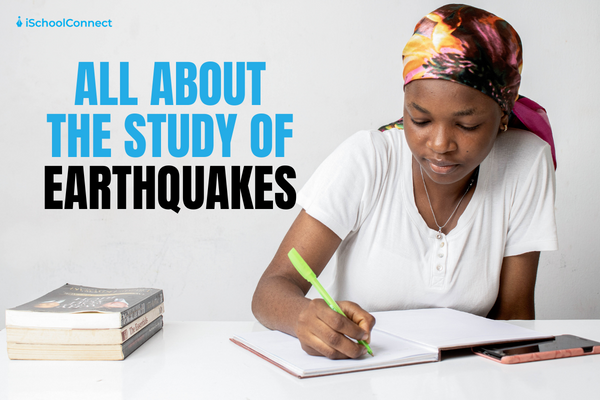Table of Contents
Earthquakes occur when the tectonic plates of the Earth’s crust shift and release energy in the form of waves. These seismic waves, which travel through the Earth’s molten core, can damage structures, bend roads and bridges, and injure living beings on the surface. Analyzing all these concepts entails the study of earthquakes.
Definition

Seismology is the scientific study of earthquakes and elastic wave propagation through the Earth or other planet-like bodies. It also covers research on the environmental effects of earthquakes, such as tsunamis, and the various seismic sources, including volcanic, tectonic, glacial, fluvial, oceanic, atmospheric, and manmade events as explosions.
Paleoseismology is a similar field that uses geology to derive information about past earthquakes. A seismogram records Earth’s motion as a function of time. A seismologist is a scientist who conducts seismology studies.
History
Earthquakes have piqued the interest of academicians since ancient times. Thales of Miletus (c. 585 BCE), Anaximenes of Miletus (c. 550 BCE), Aristotle (c. 340 BCE), and Zhang Heng all wrote about the natural causes of earthquakes (132 CE).
Zhang Heng of China’s Han period created the first known seismoscope around 132 CE. Athanasius Kircher proposed in the 17th century that earthquakes were caused by the flow of fire inside a network of channels within the Earth. According to Martin Lister (1638-1712) and Nicolas Lemery (1645-1715), earthquakes are triggered by chemical explosions within the ground.
The Lisbon earthquake of 1755 coincided with Europe’s general blooming of science and accelerated scientific efforts to understand the behavior and causes of earthquakes. John Bevis (1757) and John Michell (1757) were among the first to study earthquakes(1761). Michell discovered that earthquakes start deep beneath the Earth and are triggered by ‘moving masses of rock miles below the surface.’
Types of seismic waves

Seismic waves are elastic waves that travel through a solid or fluid medium. They are classified as body waves, which travel through the materials’ interiors; surface waves, which travel over surfaces or interfaces between materials; and normal modes, which are a type of standing wave.
Body waves
Body waves are classified into two types: pressure waves (P-waves) and shear waves (S-waves). P-waves are longitudinal waves that entail compression and expansion along the wave’s direction of motion. They are always the first waves to emerge on a seismogram since they are the quickest traveling waves through solids. S-waves are transverse waves that travel perpendicular to the propagation direction. S-waves move more slowly than P-waves. As a result, they appear later on a seismogram than P-waves. Due to their low shear strength, fluids cannot support transverse elastic waves. Hence, S-waves can only move in solids.
Surface waves
Surface waves are caused by P- and S-waves interacting with the Earth’s surface. These waves are dispersive; various frequencies have varying velocities. Rayleigh waves, which have both compressional and shear motions, and Love waves, which are solely shear, are the two principal surface wave types.
Rayleigh waves form when P-waves and vertically polarised S-waves come into contact with a solid surface and can exist in any solid medium. Love waves are created by horizontally polarised S-waves interacting with the surface. They can exist only if the elastic characteristics of a substantial material change with depth, which is always the case in seismological applications.
Surface waves travel more slowly than P- and S-waves because they are caused by these waves taking indirect paths to interact with the Earth’s surface. Surface waves travel along the Earth’s surface; their energy decays more slowly than body waves (1/distance2 vs. 1/distance3), so the shaking caused by surface waves is generally stronger than that caused by body waves. The primary surface waves are frequently the largest signals on earthquake seismograms. Surface waves are powerfully stimulated when their source is close to the surface, such as in a shallow earthquake or a near-surface explosion, and much weaker when the source is deep.
Normal modes
Although both body and surface waves are moving, major earthquakes can cause the entire Earth to ‘ring’ like a resonant bell. This ringing combines typical modes with discrete frequencies and periods of an hour or less. A major earthquake’s normal mode motion can be noticed for up to a month following the event.
The first observations of normal modes were made in the 1960s when the introduction of greater fidelity instrumentation coincided with two of the twentieth century’s greatest earthquakes, the 1960 Valdivia earthquake, and the 1964 Alaska earthquake. Since then, the Earth’s normal modes have provided some of the most powerful restraints on the deep structure of the Earth.
Controlled seismic sources
One of the basic ways of subsurface investigation in geophysics is seismic waves produced by explosions or vibrating controlled sources (in addition to many different electromagnetic methods such as induced polarisation and magnetotellurics). Salt domes, anticlines, and other geologic traps in petroleum-bearing rocks, faults, rock types, and long-buried massive meteor craters have all been mapped using controlled-source seismology.
Detection of seismic waves
Seismometers detect and record Earth’s motion caused by elastic waves. Seismometers can be placed on the ground, in shallow vaults, in boreholes, or underwater.
A seismograph is a full equipment suite that records seismic signals.
Seismograph networks worldwide continuously record ground vibrations to aid in the monitoring and analysis of worldwide earthquakes and other sources of seismic activity.
The seismic waves travel much quicker than tsunami waves, and the rapid detection of earthquakes allows for tsunami warnings. Non-earthquake sources of signals recorded by seismometers include explosions (both nuclear and chemical), local noise from wind or anthropogenic activities, incessant signals generated at the ocean floor and coasts induced by ocean waves (global microseism), and cryospheric events associated with large icebergs and glaciers.
Seismographs have recorded above-ocean meteor hits with energies as high as 4.2 1013 J (equal to that released by a ten-kiloton TNT explosion), as well as several industrial catastrophes and terrorist explosives and events (a field of study referred to as forensic seismology). The detection and analysis of nuclear testing have been a primary long-term motivator for global seismographic surveillance.
Mapping Earth’s interior
Seismic waves travel efficiently as they come into contact with the Earth’s core structure; they give high-resolution noninvasive means for examining the planet’s interior.
One of the first significant findings (suggested by Richard Dixon Oldham in 1906 and firmly demonstrated by Harold Jeffreys in 1926) was that the earth’s outer core is liquid. S-waves do not flow through liquids; the liquid core casts a ‘shadow’ on the side of the globe opposite the earthquake where there are no direct S-waves.
Furthermore, P-waves move far slower through the outer core than through the mantle.
Seismologists have mapped the earth’s mantle to a resolution of several hundred kilometers by employing seismic tomography to process information from several seismometers. Scientists have discovered convection cells and other large-scale phenomena, such as vast low-shear-velocity provinces at the core-mantle boundary.
Key takeaways
- Seismology, or the study of earthquakes, is the science that studies elastic wave propagation through the Earth or other planet-like bodies. It also includes research on the environmental effects of earthquakes, such as tsunamis, and the various related seismic sources.
- Earthquakes have intrigued academics since ancient times. Thales of Miletus (c. 585 BCE), Anaximenes of Miletus (c. 550 BCE), Aristotle (c. 340 BCE), and Zhang Heng all wrote about the natural causes of earthquakes (132 CE). Zhang Heng of China’s Han period also invented the first known seismoscope.
- Seismometers detect and record Earth’s motion due to elastic waves. Seismometers can be installed on the ground, in shallow vaults, in boreholes, and underwater.
Did you find this blog informative? If so, please share your thoughts in the comments section below. Click here to contact us for more information on the study of earthquakes. We would be happy to assist you with your queries.
Liked this blog? Read next: Introduction to Seismology – concepts, applications, and more
FAQs
Q1. Do geologists study earthquakes?
Ans- Geologists search for natural resources such as petroleum, natural gas, and precious and base metals in the energy and mining industries.
They are also at the forefront of preventing and mitigating the effects of natural disasters such as earthquakes, volcanoes, tsunamis, and landslides.
Q2. When did the first earthquake occur?
Ans- The earliest recorded evidence of an earthquake dates back to 1831 BC in China’s Shandong province, but there is a fairly complete record beginning in 780 BC during the Zhou Dynasty.
Q3. Which country had the biggest earthquake?
Ans- ‘Chile’s Great Earthquake.’ On May 22, 1960, near Valdivia in southern Chile, the world’s largest earthquake with an instrumented magnitude occurred.
The United States Geological Survey assigned it a magnitude of 9.5.







